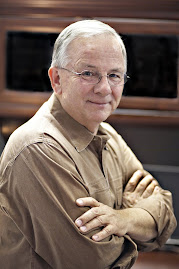
Pastor John was deeply concerned about the illiteracy of the children in his parish. His church served a rural, agricultural area. Life in this farming country was demanding. The days were long. Everyone worked hard from sunup to sundown. Work on the family farms required the help of everyone – particularly the children. As soon as they were able to walk, the children worked alongside their parents. Children were essential to the success of the family farm. Consequently, there was no time for learning reading, writing, and arithmetic. Going to school was a luxury only the noble and wealthy people in the surrounding villages could enjoy.
Nevertheless, Pastor John convinced the parishioners in his church to allow their children to stay for a few hours following the Sunday worship service so that he could teach them reading, writing, arithmetic, and Latin. Pastor John called this innovative program, “Sunday School.” As far as I can discern, this may be the first record of “Sunday School” in church history. Curiously, though, his “Sunday School” was for the purpose of providing a well-rounded education to the boys and girls in the parish.
Known today as the “Father of Pedagogy,” Pastor John Amos Comenius (1592-1670) pioneered several modern educational methodologies at his “Sunday School” in Moravia (now known as the Czech Republic). He was the first to use pictures in his textbooks; the first to include women in his school; and, the first to believe that learning was a cradle-to-the-grave process. He wrote over 150 books (some of his Latin textbooks are still in use today); documented the distinctive learning styles of children of varying ages; and, formulated an educational model based upon the developmental growth of children (which he named “pedagogy” – the art and science of teaching children). There is evidence that he turned down an offer to become the first president of Harvard University.
John Amos Comenius was also the first to believe that learning, spiritual growth, and mental/emotional development was intricately woven together. He held a classical, traditional, biblical view of the person believing that the essential purpose of education was to enable every child to be fully conformed to the image of God. “The restoration within us of the long-forgotten image of God” was the driving vision for his “Sunday School.” Comenius believed that the essential purpose of the human enterprise – in every sphere of life – was rooted in man’s call to fill the earth with the glory of God through the restored created attributes of God. Once restored, we would be able to fully participate in God’s divine redemptive purpose, which ultimately leads to the restoration and liberation of the entire fallen creation.
Comenius was convinced that authentic human living begins with the imitation of God. He approached all of life guided by a biblical view of personhood. Life was to be a “garden of delight” where we, as “gardeners,” are to “water God’s plants,” enabling each person to “find his voice.” In this way, each and every person becomes “a garden of delight for his God.” Toward this end, Comenius emphasized bringing faith and reason together into what he called “harmonic interrelation.” By this, he meant that faith and reason are to compliment each other in such a way as to teach all things to all men from all points of view. Such an approach ultimately promotes the rediscovery and restoration of the long-lost attributes (image) of God.
Think about it: This is the foundational organizing principle of leadership.
Comenius had it right!
More later …
[i] Comenius, John Amos Comenius, The Great Didactic, vol. xvi: 2.




2 comments:
Dr. Allen,
You are "right on" in your assessment of Comenius, but would you not agree that there was a lot of other good work by Ames and Ramus going on at the same time?
In Bratislava, Slovakia, the main university is named Comenius in his honor. If you can find a copy of the famous picture of the barechested man daring a tank to blast him, the main building is in the background.
Jim Hill
Post a Comment